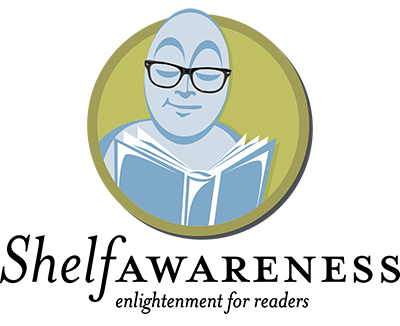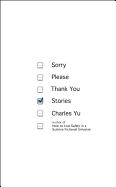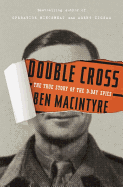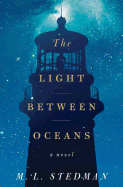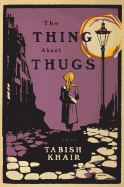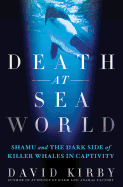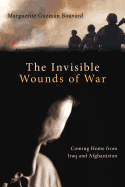Week of Tuesday, July 31, 2012
Contemporary fiction "often seems to have a positive aversion to the depiction of work in general, and financial work in particular," John Lanchester (whose latest novel, Capital, is about, well, money) observed in a Globe and Mail essay. He suggested three possible reasons for this word-spending deficit in literary fiction:
The definition of "literary"
Speed of change
Complexity
 After blaming the current reticence on Henry James, who "had a sense of what was and was not appropriate as the domain of Art," Lanchester noted that thriller authors haven't been nearly as squeamish about handling the topic of filthy lucre in high places, citing the examples of Arthur Hailey (The Moneychangers), Paul Erdman (The Set-Up, etc.) and Robert Harris (The Fear Index).
After blaming the current reticence on Henry James, who "had a sense of what was and was not appropriate as the domain of Art," Lanchester noted that thriller authors haven't been nearly as squeamish about handling the topic of filthy lucre in high places, citing the examples of Arthur Hailey (The Moneychangers), Paul Erdman (The Set-Up, etc.) and Robert Harris (The Fear Index).
I've become hooked on Norb Vonnegut's big money novels: Top Producer, The Gods of Greenwich and, most recently, The Trust. Drawing upon his Wall Street background, he crafts tales of wealth management skullduggery that do not require a copy of the Dictionary of Finance and Investment Terms to follow, thus successfully handling the "complexity" issue.
"Speed of change," however, will continue to be a primary challenge for authors, as "top producers" and their "products" adapt to market and legal fluctuations. In Don DeLillo's Cosmopolis, a character says that money has "lost its narrative quality the way painting did once upon a time. Money is talking to itself." Vonnegut deftly handles this challenge by engaging directly in the conversation. As he notes on his website, "When the money talks... I listen. And I write."
The connection between fiction and money is deep-rooted. As appalled as I am by each Wall Street scandal, I'm equally fascinated with the primal depths of human greed (see Jarndyce vs. Jarndyce in Charles Dickens's Bleak House for a historical literary precedent). When money talks, I read. Even if it is talking to itself, I still can't resist eavesdropping. --Robert Gray, contributing editor, Shelf Awareness
Where We Belong
by Emily Giffin
You never forget where you were when you read your first Emily Giffin novel. She has reenergized the chick lit genre, infusing her stories with a freshness and glamour that has proved irresistible to scores of women. In her sixth novel, Where We Belong, Giffin's writing has matured like a fine wine, and she takes her readers to a much deeper and richer place.
In this poignant tale, mega-successful television producer Miriam has it all until a surprise visitor appears on the doorstep of her lavish Park Avenue apartment--the daughter she secretly gave up 17 years ago. Kirby was adopted by a loving family, but the underachieving teen with a penchant for drumming and hoodies has always felt like a misfit. Giffin traces the (birth) mother and daughter's awkward dance toward (and away) from one another. The details of Miriam giving up baby Kirby are slowly, heartbreakingly revealed through flashbacks as the pair assess what kind of a relationship, if any, they can have in the present.
Giffin works her magic in such a way that you'll call in sick in order to keep devouring the book. The characters, as usual, are so superbly written that they feel like cherished friends. You're invested. And Giffin seems to be making a point about adoption: it's a choice that provides as much anguish as it does joy. As the story artfully reveals itself, you will adore Giffin's latest bittersweet escape into what is, what was, and what could have been. --Natalie Papailiou, author of blog MILF: Mother I'd Like to Friend
Discover: The unsinkable Emily Giffin's sixth must-read novel shows her voice maturing like a fine wine, perfect for serving at book clubs.
The Light Between Oceans
by M.L. Stedman
The Light Between Oceans, M.L. Stedman's debut novel, explores the gray area of human morality against the backdrop of life in an isolated lighthouse. Ready to leave his years on the Western front of the Great War behind him, Tom Sherbourne returns to his native Australia and takes a post as lighthouse keeper at Janus Rock. He surprises himself by falling in love with pretty, spirited Isabel, whom he marries and takes to live in the lighthouse. Eager for children, Isabel is heartbroken when she repeatedly miscarries--until a boat bearing a baby girl and a dead man washes ashore at the island. Torn between duty and his wife's happiness, Tom agrees not to report the boat and to allow Isabel to pass the baby off as their own. After all, Isabel argues, the child is almost certainly an orphan.
When the couple returns to the mainland with "daughter" Lucy in tow, they learn that her real mother is alive. Tom must choose between preserving his family and following his conscience. Isabel is torn between Tom and the child, the two loves of her life. Their choices will forever change the fate of the innocent toddler caught in their well-intentioned lie.
Stedman examines the contrast between the moral compasses of individuals and society. The elegant plot explores how many rights can make a wrong and how our choices define who we are. This account of an honorable man's disastrous brush with deceit is sure to both captivate readers and haunt them. --Jaclyn Fulwood, blogger, Infinite Reads
Discover: A lighthouse keeper and his wife pass a baby off as their own with disastrous results in this debut Australian novel.
The Wild Princess: A Novel of Queen Victoria's Defiant Daughter
by Mary Hart Perry
Princess Louise of England was the sixth child and fourth daughter of Queen Victoria and Prince Albert. Like her siblings, Louise married well, wedding the Duke of Argyll in 1871. Unlike her siblings, Louise had no children. Was her husband homosexual? Was Louise left sterile by a rumored abortion in her "wild" youth? In The Wild Princess, Mary Hart Perry melds fiction with history to explore one possible, if imagined, answer to these questions.
Perry portrays Louise as married to a man she barely knows, whose sexual preferences leave him utterly unwilling to have children with her. Mourning the loss of the children that will never be, Louise throws herself into her art, charity work and the women's suffrage movement. She assumes she'll learn to live without romance or adventure, but she does not count on two things--the machinations of the Fenian movement for Irish independence and the protection of a dashing U.S. Civil War veteran named Stephen Byrne.
The Wild Princess is a wild ride, artfully told and overflowing with lavish Victorian detail. Perry's Louise is equal parts fearless and vulnerable, admirable but also approachable. Perry walks the line between fact and invention with ease, weaving a fictional tale that nevertheless feels real. --Dani Alexis Ryskamp, blogger at The Book Cricket
Discover: Romance and adventure in Victorian England, in a historical novel comparable with the works of Philippa Gregory.
How to Get into the Twin Palms
by Karolina Waclawiak
The women outside the Twin Palms, an exclusive Russian nightclub in Anya's Los Angeles neighborhood, go in wearing "silk and pearls and amber, their hair in root vegetable colors," crushing slim cigarettes underneath towering heels. The men have silk shirts and unbuttoned leather jackets and "Eastern bloc homemade haircuts." When Anya walks by, the women curse at her in Russian and the men stare. "I know what they want to ask," Anya says. "Polska? Ruska?... Or maybe just Amerykanska. They can't tell with me."
Anya, the 25-year-old narrator of Karolina Waclawiak's How to Get into the Twin Palms, is not exactly any of those things. Born in Poland but living in the States since childhood, she has spent years mimicking "American" while never quite becoming one. So Anya decides she will pass as Russian instead. She dyes her hair from California blonde to dark maroon and takes up smoking. She gives herself a Russian name. And she pursues Lev, a Russian gangster who comes knocking only in the early morning hours. Meanwhile, her unemployment checks stop coming, and fires are burning in the hills. "LA was trapped and I was trapped within it," Anya narrates. "And neither of us should have been here in the first place."
Displacement and profound loneliness pervade the novel's short, fragmented chapters like smoke from the encroaching fires and Anya's cigarettes. A young Polish immigrant herself, Waclawiak writes of Anya's struggle to belong with wit and sensitive insight. Anya may eventually make it to the Twin Palms, but she won't find herself inside. --Hannah Calkins
Discover: In Karolina Waclawiak's fantastic debut, a lonely young Polish-American woman in Los Angeles tries to reinvent herself as a Russian immigrant.
Mystery & Thriller
The Thing About Thugs
by Tabish Khair
Tabish Khair, an award-winning poet, has woven stories inside of stories in The Thing About Thugs, a crime novel about a series of gruesome murders in Victorian London.
Starting in a small Bihari village, Khair introduces readers to Amir Ali, who, in an effort to exact revenge on his family's murderer, falsely professes to an English officer named William T. Meadows that he is a member of the Thugee cult. Meadows, who is writing a book about criminality, sees Amir as a perfect study specimen and takes him back to London to record his (fictitious) life story. So when members of London's underclass begin showing up dead and headless, Amir's charade turns into a deadly one--he is the prime suspect in the grisly murders.
This is not a mystery in the sense that the reader is trying to solve the crime; we know who is guilty from the onset. Instead, Kahir looks at the mystery of man, his relationship with others and with the world around him, as well as his actions and reactions to the events that affect him. The story's suspense is driven by the unpredictability of man.
London's underclass makes for a resplendent array of multi-faceted characters who stand in sharp contrast to the dark corners and tunnels and alleyways they inhabit. Kahir's poetic language makes this world he has created explode for the reader's senses: sights, sounds and even smells emanate from the pages, wrapping readers in a web of stories. --Jen Forbus of Jen's Book Thoughts
Discover: A good man who only wants justice but learns that "stories, true or false, are difficult to escape from.... In some ways, all of us become what we pretend to be."
Heron's Cove
by Carla Neggers
In 2011, readers of Carla Neggers's Saint's Gate met ex-nun Emma Sharpe, now an FBI agent specializing in art crimes. While investigating a murder at her former convent, she met Colin Donovan, a handsome deep-cover agent working on the same case. As Heron's Cove begins, Emma and Colin are back in Maine, ostensibly to get some rest and figure out whether their new romance can survive the pressures of their jobs. But Emma's past (she comes from a family of art detectives) and Colin's instinct for trouble ensure they won't be at peace for long.
As Colin extricates himself from a situation involving Russian thugs and illegal arms dealings, Emma meets Tatiana, a Russian jewelry designer who wants Emma's help in preventing the imminent theft of an exquisite jewelry collection. But Tatiana's visit to Heron's Cove, just before the arrival of a yacht bearing a Russian millionaire with connections to the jewels, along with appearances by Emma's family and the men who are pursuing Colin, is no coincidence.
The plot of Heron's Cove is intriguing, if a bit predictable, but the real fun lies in Emma and Colin's encounters with the novel's supporting characters, from Father Finian Bracken, the whiskey-distilling Irish priest, to Colin's three tough-guy brothers, who aren't quite ready to accept Emma yet. Though Neggers's characters occasionally veer into stereotypes, she knows how to keep things moving and hold readers' attention, making Heron's Cove perfect escapist reading for a long weekend. --Katie Noah Gibson, blogger at Cakes, Tea and Dreams
Discover: Suspense, romance between FBI agents and stolen Russian jewelry, all on the coast of southern Maine.
Science Fiction & Fantasy
Sorry Please Thank You: Stories
by Charles Yu
The many fans of Charles Yu's first novel, How to Live Safely in a Science Fictional Universe, can now enjoy more of the Yu "speculative experience" in his second collection of stories (after 2006's Third Class Superhero). "Standard Loneliness Package" is the best, envisioning a world where, thanks to an implant chip that allows one's consciousness to be transferred, people can pay an "emotional engineering firm" to offload their pain, emotional and physical, onto another person. Our narrator works at one of these companies; his day is filled with "something like a huge boot," an "infinite foot," stepping on his chest. In "First Person Shooter," a couple who work the graveyard shift at WorldMart encounter a "sort of pretty in a melancholy way" zombie woman who has misplaced a finger and becomes mesmerized by House of the Dead Two, showing in the television department.
Other stories introduce us to a couple encountering "door" (the word) in their living room, a man who wants to buy a room and a lifestyle from a company that sells such things and the suicide note of a person who has just left the room: "You're reading this, so it's too late. For me, I mean."
It's a mixed bag: some inventive stories surprise and amuse, others seem slight and forced. At its best, though, Sorry Please Thank You is a mix of science fiction, absurdist humor and Beckettian monologue, with storytelling techniques that twist narrative into a computer-esque objectivism; think Donald Barthleme's strangest pyrotechnics in a Philip K. Dick or Haruki Murakami world. --Tom Lavoie, former publisher
Discover: The speculative and sf stories of a promising young writer, the computer century's heir to Philip K. Dick and Ray Bradbury.
History
Double Cross: The True Story of the D-Day Spies
by Ben Macintyre
British intelligence nearly sabotaged the most important battle of the Second World War by misplacing--or possibly murdering--a lap dog named Babs. Lily Sergeyev, a Frenchwoman of Russian descent, agreed to come to London as a double agent as long as she could bring her precious terrier-poodle mix, Babs. But MI5 apparently found safeguarding a dog too frivolous in a time of war, and Babs disappeared suspiciously. Sergeyev, seething, secretly plotted to reveal her duplicity to the Germans.
Meanwhile, a randy Yugoslav with fierce anti-Nazi convictions was so deeply embedded in German intelligence that MI5 should have been thrilled. But his nonstop party lifestyle presented his handlers with staggering financial headaches.
With all the breezy outrageousness of a good spy novel, Ben Macintyre's Double Cross unspools all the now-declassified details of the small, ragtag band of displaced Continentals who, along with their British handlers, somehow managed to piece together a campaign of misinformation that threw the Nazis off the scent of the Normandy invasion, thereby keeping Hitler from preparing a formidable defense. Macintyre (Operation Zigzag) never loses track of the gravity of what was at stake for the Double Cross operation. But, through his astonishing, entertaining chronicle, he also lets readers revel in the absurd exploits of these unlikely heroes whose lies, somehow, tipped the balance of fate for millions. --Cherie Ann Parker, freelance journalist and book critic
Discover: A rollicking history of the spy network that helped make D-Day a success.
Current Events & Issues
Death at SeaWorld: Shamu and the Dark Side of Killer Whales in Captivity
by David Kirby
David Kirby strives for objectivity in Death at SeaWorld, even though, as he reports, he could not convince a single advocate of the "display industry" to comment on the subject of killer whale captivity. The industry perspective is thus represented by public record, including press releases and legal testimony, with far from flattering results. SeaWorld is depicted as a litigious, public relations-savvy powerhouse, able to dictate federal marine mammal regulations and even bury government investigations.
Killer whales are powerful, intelligent, curious and deeply social beings, but in captivity their average life span shrinks dramatically, the whales become neurotic and a combination of boredom and aggression can lead to trainer injuries and deaths as the whales lash out. (The widely reported death of SeaWorld's Dawn Brancheau in 2010 is just one of three killings attributed to Tilikum, one of the park's bull males and an essential part of its breeding program.)
Kirby dedicates much of his comprehensive investigation to those who fight against killer whale captivity, especially Naomi Rose, a scientist with the Humane Society. He effectively combines intimately biographical and broad historical information as he recounts both Dr. Rose's evolution into a marine mammal activist and SeaWorld's emergence as an entertainment park superpower.
Readers who value the natural world and the other intelligent species we share it with will find Death at SeaWorld fascinating, shocking, even infuriating, but ultimately rewarding. --Tobias Mutter, freelance reviewer
Discover: The majesty of killer whales, the inherent cruelty of their captivity and the passion of those who fight for their freedom.
The Invisible Wounds of War: Coming Home from Iraq and Afghanistan
by Marguerite Guzmán Bouvard
In many ways, the plight of returning combat veterans has evolved since the end of the Vietnam War; since 9/11, Americans have been almost wholeheartedly supportive of the men and women who put their lives on the line. But there's a disconnect between that rosy public rhetoric and the reality of how the United States treats veterans once they've come home, and Marguerite Guzmán Bouvard's The Invisible Wounds of War is a searing indictment of this situation.
Guzmán Bouvard reports on the gamut of the returning vet experience, from the huge burdens put on individual families to the grassroots organizations that have risen up in response to institutional failure. Some terrible tragedies are being played out as veterans and their families seek appropriate levels of mental health care, with some cases ending in suicide as soldiers are left with limited help in coping with the guilt and grief they feel. Guzmán Bouvard's account of female combat survivors who were raped by fellow soldiers while serving abroad is especially noteworthy; the indifference of the military bureaucracy and the psychological double wallop encompassed by survival and then rape by their supposed "brothers in arms" is almost beyond imagining.
The Invisible Wounds of War is a sobering document, but it also amply displays the bravery of returning vets and their. While the problems they face are daunting, there is a thread of hope--concrete, prescriptive hope--that points to a better future if those most able to help step up and do so. --Donald Powell, freelance writer
Discover: A harrowing yet hopeful account of American veterans' tough road home from Iraq and Afghanistan.
Children's & Young Adult
The Happy Little Yellow Box: A Pop-Up Book of Opposites
by David A. Carter
David A. Carter (One Red Dot) once again uses his outstanding skills as a writer, artist and paper engineer to teach opposites to the very young.
Carter introduces the star of this show tied with a neat ribbon: "Outside and inside/ the/ Happy Little Yellow Box." Tucked "inside" (as flaps to turn) are three nested boxes (red, blue and white), plus a little critter tucked into the smallest one. The text on each double-page spread begins with the pair of opposites, and ends with "Happy Little Yellow Box" (or "Boxes"). The hero stars as a helicopter for "High and low/ with the/ Happy Little Yellow Box." It lifts off as the child opens the page, and lands as the child moves onto the next page.
The author-artist makes abstract concepts such as "near and far" understandable, too. Children meet the yellow fellow in the window of a house that's up close, and the pull of a tab moves the Box farther down the road, to a seemingly smaller window. A mare and her colt move "in and out" of a yellow box on the back of a truck; youngsters "open and close" a golden door to a fire station. Carter's use of repetition reinforces the pairings in different contexts. His final "Large and small/ Happy Little Yellow Boxes" brings the book full circle, when a 3-D smiling yellow cube houses a smaller version inside. The genius of the book is how Carter pares down the opposites to their essentials. --Jennifer M. Brown, children's editor, Shelf Awareness
Discover: Opposites beautifully illustrated as sculptures along with pull-tabs so deceptively simple that children will want to engineer their own.
On the Day I Died
by Candace Fleming
"The best ghost stories... should always include a kernel of truth," says Candace Fleming in her endnotes to On the Day I Died. That basis in truth makes these 10 tales as spine-tingling as any a child will hear around the campfire this summer.
The ghosts' eras, from the 1850s to the present, and the variety of voices and moods means there's something here for everyone. The full-cast recording fully exploits the possibilities--great for a family car trip. Fleming ties together the ghosts' tales through high school junior Mike Kowalski, who stops to pick up a soaking-wet girl by Hawthorn Lake on a cold October night. Readers may guess before Mike does that young Carol Anne is a ghost, but that does not make her story any less harrowing. Mike winds up at White Cemetery (an actual cemetery outside Chicago), where Carol Anne is buried in "a special plot for young folks."
The ghosts take turns explaining to Mike how they got there and, in between, they comment as a group. Gina cries wolf one time too many, and is undone by a boy who's taken lying to a high art form. There's also a Faustian bargain, a riff on the classic Monkey's Paw lore, two tales tied to Al Capone and the memorable and aptly named "Edgar." MacLeod Andrews, who reads "Edgar," makes boy's Edgar Allan Poe–like "ponderings" seem entirely rational, except that he believes his wallpaper has come alive. On the Day I Died is perfect for graduates of Goosebumps and Alvin Schwartz's Scary Stories. [Also available in hardcover from Schwartz & Wade/Random House, $16.99, 9780375867811.] --Jennifer M. Brown, children's editor, Shelf Awareness
Discover: Listen to 10 spine-tingling ghost stories told in a real cemetery outside Chicago by teens who died too young.

